Realizing Children’s Rights in St Vincent
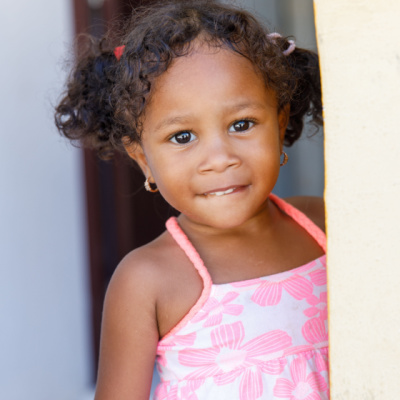
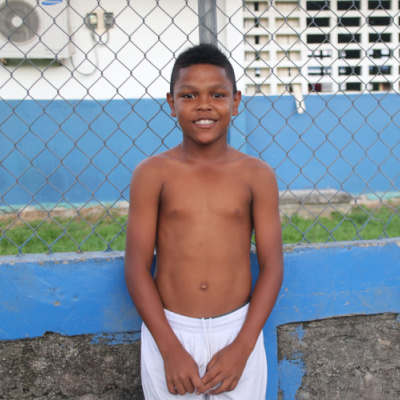
Saint Vincent and the Grenadines is a Caribbean country made up of a dozen islands. Despite the government’s efforts over the past decade and a slight improvement in 2015, its economy remains fragile and hinders the well-being of its children. Thus, among other issues, children face not only poverty but also health problems, child labour and other obstacles to their full development.

Children’s Rights Index: 7,51 / 10
Orange level: Noticeable problems
Population: 111,269
Pop. ages 0-14: 22%
Life expectancy: 73 years
Under-5 mortality rate: 14‰
St Vincent at a glance
St Vincent (derived from its full name Saint Vincent and the Grenadines) is a rather atypically composed state, in the Lesser Antilles, a region of the Caribbean. St Vincent is the main island, and other small islands form part of the Grenadines archipelago.
Following European colonisation, France and the United Kingdom fought over the archipelago for a long time, but the latter occupied it until it ultimately gained independence. Although the state became independent on 27 October 1979, it is still part of the Commonwealth Kingdom and is therefore ruled by Charles III.
Status of children’s rights [1]
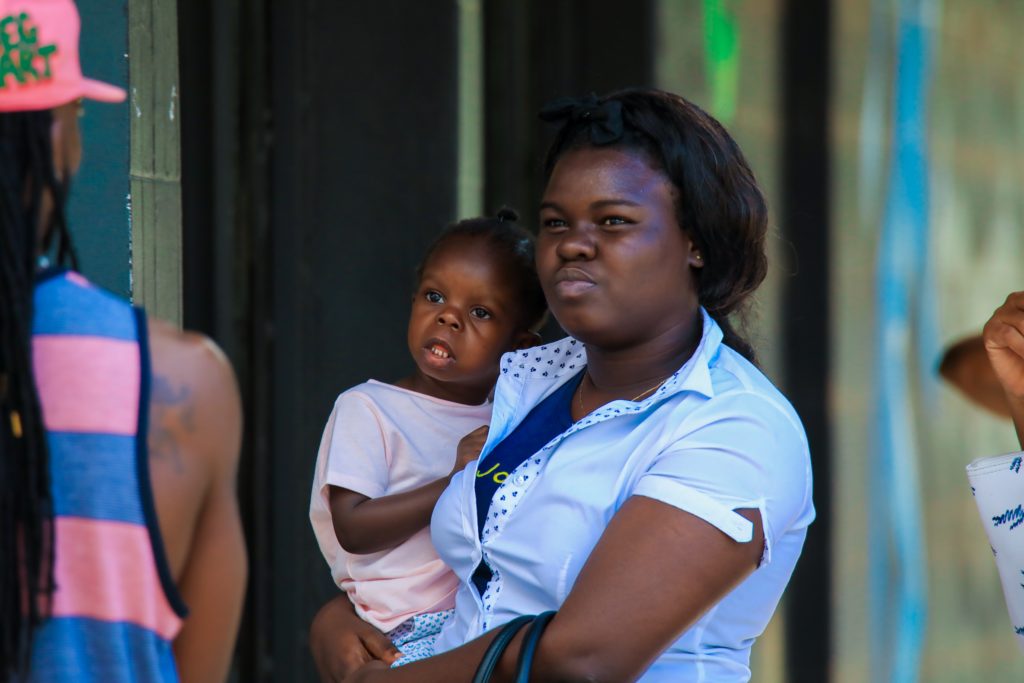
St Vincent’s legislation on children’s rights is active, both internally and internationally. Indeed, it ratified the Convention on the Rights of the Child (UNTC, 2022) on 26 October 1993. Furthermore, it ratified the Optional Protocol to the Convention on the Rights of the Child on the involvement of children in armed conflict in 2011, and the Optional Protocol to the Convention on the Rights of the Child on the sale of children, child prostitution and child pornography, in 2005 (OHCHR, 2022).
Finally, at the national level, a National Policy Framework for Child Protection was adopted in 2016 (in collaboration with UNICEF), although its optimal effectiveness is questioned (OHCHR, 2017). Nevertheless, the economic and political situation in St Vincent leads to some deviation from children’s rights.
Children’s rights are covered by international instruments, in addition to those mentioned above. Thus, St Vincent ratified the Convention on The Worst Forms of Child Labour of 1999 on 4 December 2001, as well as the International Covenant on Economic, Social and Cultural Rights in 1981.
From a regional perspective, the absence of St Vincent from the 1978 American Convention on Human Rights can be noted. On the national level, however, some progress related to children’s rights can be observed, such as the proclamation of the Status of Children Act (2011) and the Children (Care and Adoption) Act (2010) (Committee on the Rights of the Child, 2017; UNESCO, 2021).
Despite this, there are still major concerns in St Vincent, accentuated since 2010 by two events, among others, namely the global economic crisis and natural disasters. Merissa Finch-Burke, Director of Social Affairs for St Vincent and the Grenadines delegation, highlighted the main concerns in 2017.
These concerns relate to different issues, which include, among others, the following: the definition of a child not being clarified to ensure that “all children under the age of eighteen” can enjoy the rights of the Convention on the Rights of the Child; states legislation approving that children under the age of sixteen can be criminalised for homosexuality and also subject to the death penalty (potentially leading to a grey zone regarding child labour); the increase in sexual violence, abuse of children and the high rate of incest; the lack of education leading to abuses and violence; and health deficiencies among children (OHCHR, 2017).
Addressing the needs of children
Right to education
Article 29 of the Convention on the Rights of the Child provides the basis for a child’s right to education. The Education Act (2006), the National Curriculum and Assessment Framework, and two successive strategic plans, set out the context for the education that the State wishes to offer children at primary and secondary levels (UNICEF, 2017). However, while these have to do with legislation at the level of the State, their implementation is yet to be observed.
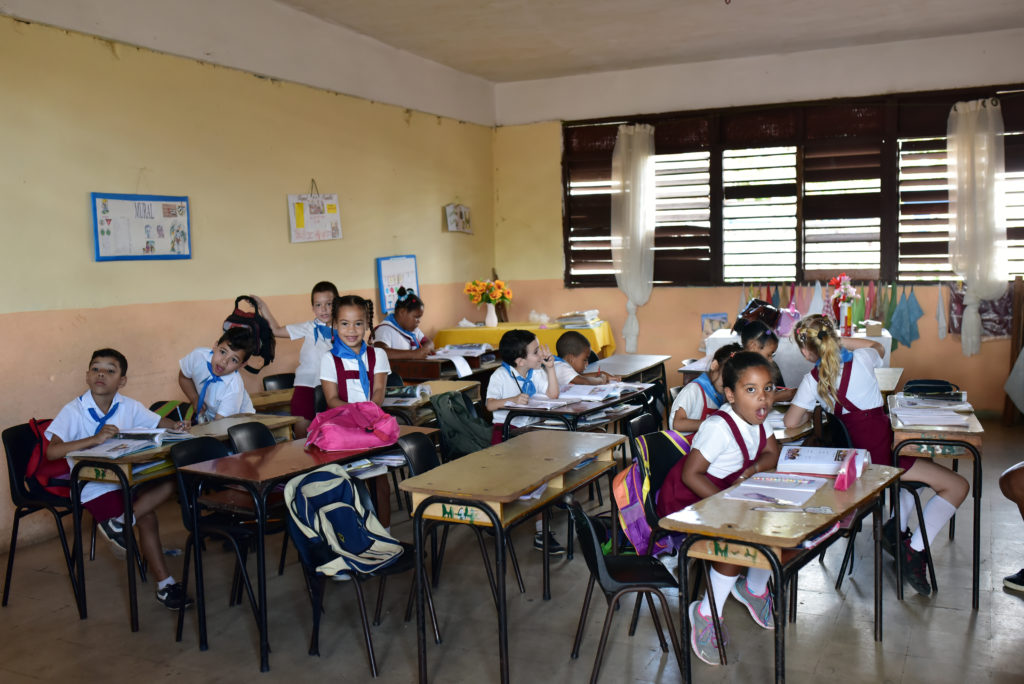
Indeed, the lack of education is at the root of many other problems. In 2000, about 4,000 children between the ages of three to five were registered in day-care and preschool services. However, about 75% of children living in rural areas had difficulties accessing these services (UNICEF, 2017). In 2017, the World Bank Group reported that 58% of children were not attending primary school (World Bank Group, 2017). There is therefore a sharp contrast between plans and efforts by the government and the ground reality which hinders correct implementation. This has resulted in a steady decline in primary school enrolment since 1995. (UNICEF, 2017).
Right to health
Articles 6 and 24 of the Convention on the Rights of the Child deal with the issue of children’s health. The under-five mortality rate has fallen drastically from 175‰ in 1960 to 14‰ in 2020 (World Bank Group, 2020). Although these results seem promising, St Vincent still faces certain problems. Indeed, most infant deaths occur during the first 28 days. The reasons for these deaths are prematurity, perinatal infections, or congenital conditions, which have their origin in the perinatal period. According to UNICEF, 7.9% of new-borns were moderately malnourished between 2008 and 2009 (UNICEF, 2017).
The Sub-Saharan African region is the most affected region by HIV, and the second most affected is the Caribbean. Indeed, St Vincent is heavily affected by HIV, with the first case of HIV being reported in 1984. In 2009, 1,093 people were diagnosed with HIV. Various reports from St Vincent highlighted that five of the 269 people receiving antiretroviral treatment were under the age of 15 in 2013 (UNICEF, 2017).
Right to identity
Birth registration in St Vincent has long been a major problem. However, some improvements can be observed. These registrations can be done in all the islands of the archipelago. In rural areas, when children are born at home, registration can be done by nurses who visit the home. In addition, underage migrants can be provided with the necessary care, regardless of whether they are legal or not (OHCHR, 2017).
Another issue concerning the identity of the child is the age given to children to define them legally. The Government should therefore amend this legislation by setting a single age for the definition of the child, as there is an ongoing debate about whether to choose sixteen or eighteen years (OHCHR, 2017).
The legislation for the protection of the rights of the child is based on the best interests of the child. This principle is considered in education, health and in cases of placement of children in institutions or foster care for instance. The law sets a certain age for marriageability (different for girls and boys) and another for criminal responsibility.
These problems of defining the child led to abuses in certain areas. Among these abuses are child labour, forced marriages and the application of penalties in criminal matters, etc. The current debate is about finding an agreement on a single age for the definition of the child.
Risk factors → Country-specific challenges
Child violence
Regarding violence against children, the Committee on the Rights of the Child in 2017 raised concerns on several issues and called on the state to put in place effective measures to address these concerns. Indeed, children complain of being victims of police brutality. The rate of prosecutions and convictions for the crime of child sexual abuse, including incest, remains low (to be discussed in another section). Finally, children are excessively punished and subjected to repressive measures if they use drugs and illegal substances (Committee on the Rights of the Child, 2017).
In St Vincent, violence against children is still present. Poverty and education obviously contribute to this situation. Support for corporal punishment, for example, has remained largely unchanged, rising from 45% in 2014 to 47% in 2019. Parents also use corporal punishment, and the statistics show a rise of 51% in 2014 and 54% in 2019 (UNICEF, 2021).
Child labour
One consequence of the lack of a legal definition of a child is child labour. Children can work from the age of fourteen. It is essential that the Labour Code be brought into line with the Convention on the Rights of the Child. Indeed, although the government has made efforts to combat child labour, it was found in 2012 that 8% of children aged between five and fourteen were involved in child labour (OHCHR, 2017).
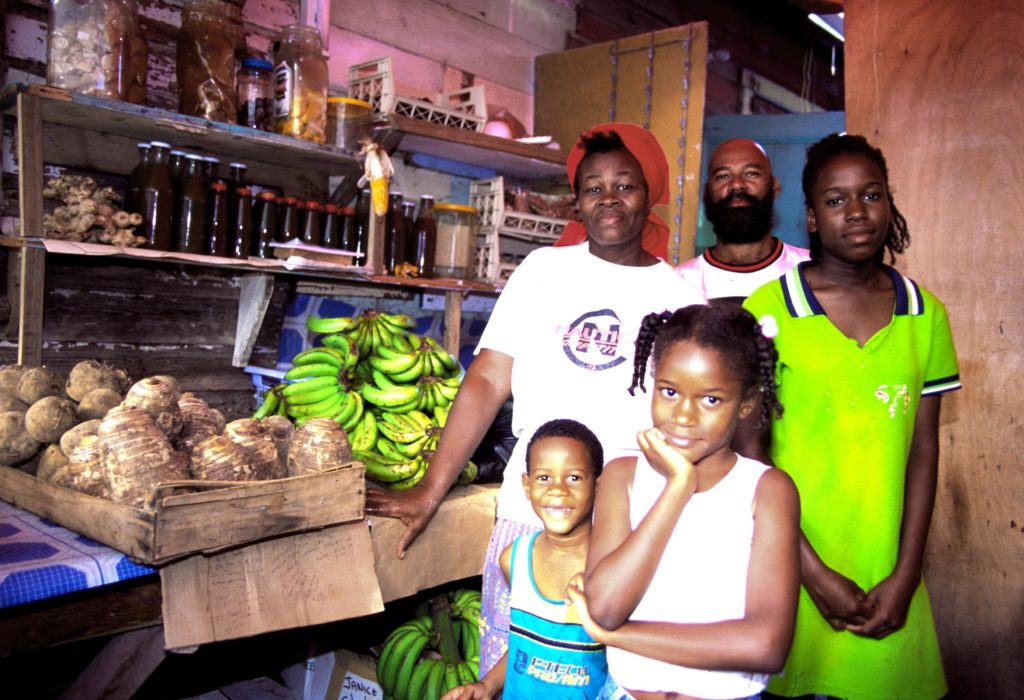
In 2016, St Vincent’s did not have a policy on dangerous work for people under the age of eighteen, and its laws do not adequately protect these people from activities identified as dangerous. This issue is very closely linked to the legal definition of a child and the setting of an age (Initiative régionale Amérique latine et Caraïbes sans travail des enfants, 2016). At the beginning of 2017, the St Vincent Labour Code recognised that a child has the right to work from the age of fourteen. While it is true that many help their parents in the agriculture business, some even drop out of school to work with their parents, which is not acceptable (OHCHR, 2017).
Child exploitation
Sexual violence is also one of the most pressing issues in St Vincent. While these are prosecuted – when reported – incest is subject to various trials. However, it was noticed that many children withdrew their final statements, making it difficult to hold the trial. The procedure itself allows for the removal of the child as soon as the complaint is filed (UNICEF, 2017). In 2015, a new law on domestic violence provided for the obligation to register all violence against children.
Despite this, the Committee on the Rights of the Child’s 2017 Concluding Observations on the combined second and third periodic reports of St Vincent and the Grenadines urged the government to ensure greater efficiency in accessing and following up on complaints mechanisms, as well as a proactive approach to investigations of violence against children, in particular the sexual abuse of children.
It was also found that foreign women sex workers can be exploited in sex trafficking, but also in forced labour. Drug traffickers are suspected of exploiting workers in forced labour for the production of marijuana. Finally, child sex trafficking, facilitated by parents and caregivers, remains a problem in St Vincent (UNICEF, 2021).
Child discrimination
Discrimination is a real concern for certain groups of children in St Vincent’s. These groups include children with disabilities (intellectual and psychosocial), children living with or affected by HIV/AIDS, lesbian, gay and bisexual children.
The last category mentioned is governed by policies and practices that prohibit consensual same-sex relations between men and boys over the age of sixteen, which may be criminalised under the 1990 Penal Code for the same reason. Finally, lesbian, gay and bisexual children are also governed by policies and practices, as they are considered psychosocially disturbed (Committee on the Rights of the Child, 2017).
The Constitution of St. Vincent and the Grenadines (1979) protects against discrimination on the basis of sex, race, place of origin, political opinion, colour or creed. Nevertheless, the law continues to tolerate some discrimination, notably in the marriage act, regarding minimum age, as discussed above. Indeed, it provides for a minimum age of fifteen years for girls and sixteen years for boys.
Mothers do not receive the same maintenance payments depending on their situation, whether they have been married or are single. It is therefore the courts and magistrates who indirectly discriminate against children. Another category of children that is discriminated against at the legal level is that of children with disabilities.
The absence of specific legislation for their needs deprives them of equality and in particular of their integration in ordinary schools. Finally, children from minority ethnic groups are also affected. These include Amerindians and Asians, often from lower income levels (UNICEF, 2010).
Written by Morgane Schmutz
Internally proofread by Aditi Partha
Last updated on 29 November 2022
References:
Initiative régionale Amérique latine et Caraïbes sans travail des enfants (2016). Huit pays d’Amérique latine et des Caraïbes affichent des progrès significatifs dans la lutte contre le travail des enfants. Retrieved from Initiative régionale Amérique latine et Caraïbes sans travail des enfants at https://www.iniciativa2025alc.org/fr/noticias/ocho-paises-de-america-latina-y-el-caribe-presentan-avances-significativos-en-la-lucha-contra-el-trabajo-infantil, accessed on 11 January 2023.
OHCHR (2017). Committee on the Rights of the Child examines the report of Saint Vincent and the Grenadines. Retrieved from the Office of the United Nations High Commissioner for Human Rights at https://www.ohchr.org/en/press-releases/2017/01/committee-rights-child-examines-report-saint-vincent-and-grenadines, accessed on 27 November 2022.
OHCHR (2022). Status of Ratification Interactive Dashboard. Retrieved from the Office of the United Nations High Commissioner for Human Rights at https://indicators.ohchr.org/, accessed on 27 November 2022.
UNESCO (2021). Saint Vincent and the Grenadines Inclusion. Retrieved from UNESCO at https://education-profiles.org/latin-america-and-the-caribbean/saint-vincent-and-the-grenadines/~inclusion, accessed on 12 November 2022.
UNICEF (2021). Generation Unlimited: the Well-being of Young People in St Vincent and the Grenadines – FACT SHEET. Retrieved from UNICEF at https://www.unicef.org/easterncaribbean/media/2941/file/GenU%20SVG%20Fact%20sheet.pdf, accessed on 25 November 2022.
UNICEF (2017). Situation Analysis of Children in Saint Vincent and the Grenadines. Retrieved from UNICEF at https://www.unicef.org/easterncaribbean/media/926/file/Situation-Analysis-of-Children-in-Saint-Vincent-and-the-Grenadines-2017.pdf, accessed on 29 October 2022.
UNICEF (2010). Universal Periodic Review – Human Rights Council Unicef Inputs – Saint Vincent And The Grenadines. Retrieved from UNICEF at https://www.ohchr.org/sites/default/files/lib-docs/HRBodies/UPR/Documents/Session11/VC/UNICEF-eng.pdf, accessed on 11 January 2023.
UNTC (2022). Status of Treaties. Retrieved from United Nation Treaty Collection at https://treaties.un.org/pages/ViewDetails.aspx?src=IND&mtdsg_no=IV-11&chapter=4&clang=_en, accessed on 27 November 2022.
World Bank Group (2017). Children out of school, primary – St Vincent and the Grenadines. Retrieved from World Bank Group at https://data.worldbank.org/indicator/SE.PRM.UNER?locations=VC, accessed on 20 November 2022.
World Bank Group (2020). Mortality rate, under-5 (per 1,000 live births) – St Vincent and the Grenadines. Retrieved from World Bank Group at https://data.worldbank.org/indicator/SH.DYN.MORT?locations=VC, accessed on 10 November 2022.
[1] This article by no means purports to give a full or representative account of children’s rights in St Vincent; indeed, one of the many challenges is the scant updated information on the children in St Vincent, some of which are unreliable, not representative, outdated, or simply non-existent.

